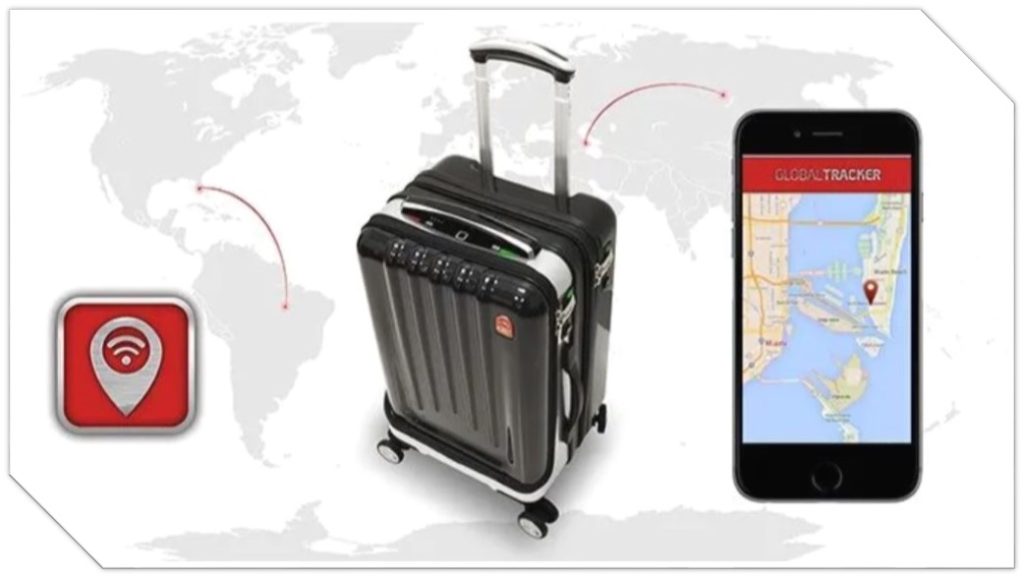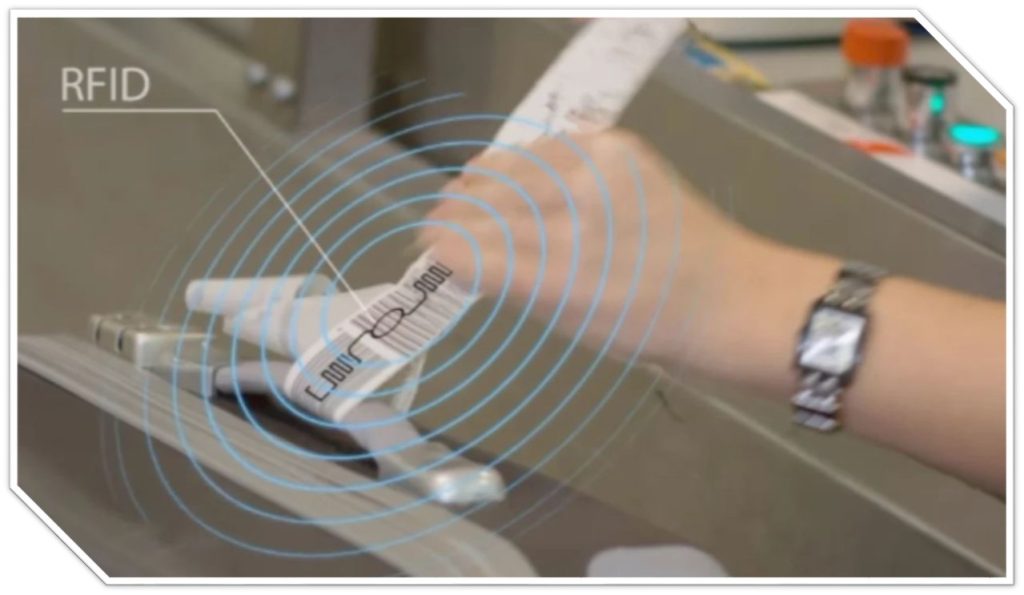روزانه میلیونها نفر در سراسر جهان سفر میکنند. با افزایش تعداد چمدانها و بارها احتمال گم شدن یا تعویض ناخواسته آنها وجود دارد. این امر منجر به نارضایتی مسافران میشود. بنابراین مسئولان فرودگاه میبایست برای بهبود رضایتمندی مسافر به دنبال راهکارهای کاربردی و مناسب باشند. صرف نظر از اینکه این مشکلات ناشی از یک خطای انسانی یا رایانهای است، باید یک فناوری جدید در فرودگاهها برای کاهش جابجایی چمدانها، آسیب دیدن بار، انتقال چمدان به مقصد اشتباه و غیره معرفی شود. از این رو، در سالهای اخیر فناوریهایی از جمله RFID، QR scan، بارکد، بیومتریک و اینترنت اشیاء به منظور حل این چالشها توصیه شدهاند.

سالانه تقریباً ۵/۴ میلیون چمدان توسط سیستم حمل و نقل بار فرودگاه جابجا میشود و بر اساس آمارها این تعداد در ۲۰ سال آینده دو برابر خواهد شد.
با افزایش تعداد مسافران خطوط هوایی در سراسر جهان، فرودگاهها ممکن است در ردیابی و مدیریت چمدانهای مسافران با مشکل مواجه شوند. از این مشکلات میتوان به حمل و نقل نادرست، گم شدن چمدان، تأخیر در تحویل یا آسیب دیدن چمدان حین حمل و نقل اشاره کرد که به یک کابوس برای مسافران تبدیل شدهاست.
بر اساس گزارش سالانه شرکت فناوری اطلاعات حمل و نقل هوایی SITA، از هر 1000 چمدان، شش مورد با مشکلات فوق مواجه میشود. علاوه بر این، مدل و طراحی مشابه چمدانها اغلب منجر به تشخیص اشتباه توسط مسافر و جابجایی یا تعویض چمدان میشود.
طبق قطعنامه ۷۵۳ یاتا، هر شرکت هواپیمایی باید چمدانی که از مسافر تحویل میگیرد را پیگیری کند و اطلاعات ردیابی را قبل از تحویل بار به اشتراک بگذارد. به منظور برآورده کردن این قوانین فرودگاههای بین المللی به روشهای مانند شناسایی از طریق فرکانس رادیویی (Radio Frequency identification)، بیومتریک، اینترنت اشیاء و سایر راهحلهای فناوری روی آوردهاند و در حال هوشمندسازی خدمات مختلف هستند.
تکنیک پردازش تصویر که شامل فناوری تشخیص چهره همراه با اینترنت اشیا (IoT) است نیز میتواند تحول بزرگی در سیستم حمل و نقل بار ایجاد کند. این فناوریها با ذخیره و به اشتراک گذاری اطلاعات شفاف در زمان واقعی، پلتفرم بهتری را برای مسافران هوایی ارائه میدهند.
در روش RFID یا شناسایی از طریق فرکانس رادیویی یک برچسب بر اساس اطلاعات جمع آوری شده از مسافر تولید خواهد شد و سپس اطلاعات در نرم افزاری که برای ذخیره و مدیریت اطلاعات مسافر توسعه یافته است، ذخیره میشود.
توسعه این فناوریهای مدرن نقش قابل توجهی در بهبود ردیابی، کمک به مکانیابی چمدانها، هشدار به کارکنان در صورت عدم بارگیری صحیح چمدان و شناسایی چمدان توسط پرسنل امنیتی برای تغییر برنامه پرواز دارند.
مزیت اصلی این سیستمها صرفه جویی در زمان است، زیرا مسافران به دلیل در اختیار داشتن یک شماره شناسایی منحصربهفرد به محض احراز هویت چمدانهای خود را در کمترین زمان ممکن دریافت میکنند و دیگر نگران گم شدن وسایل شخصی خود نخواهند بود.
به طور کل، هدف استفاده از فناوری در صنعت هوانوردی ایجاد یک محیط صمیمیتر، صرف زمان کمتر، کاهش صفهای طولانی و افزایش امنیت بیشتر مسافرین است. مدیران فرودگاه با پیادهسازی طرحهایی مانند جابجایی هوشمند چمدان/بار میتوانند به مزایای اقتصادی متعددی دست پیدا کنند و رضایت مسافران را به طور قابل توجهی افزایش دهند.
On The Importance of a Smart Luggage Tracking System
Every day millions of people travel around the world. As the number of baggage increases, so does the possibility of them being lost, mishandled and damaged. This of course leads to passenger dissatisfaction. Therefore, airport officials should look for practical and intelligent solutions to overcome these challenges. Regardless of whether these problems are caused by human or computer errors, introducing a new technology is an important step for airports who are looking for new ways to overcome these challenges. As a result, in the last decade, technologies such as RFID, QR scan, barcode, biometrics and Internet of Things have been suggested by large number of research literature as solution to these issues.
Approximately, 4.5 million bags are handled every year by the airports’ baggage handling system. According to studies, this number will double up in the next 20 years. With the increase in the number of airline passengers around the world, airports may face difficulties in tracking and managing luggage. These issues include mishandled, delayed and lost baggage which is a nightmare for most passengers.
Based on the annual report of SITA, six out of 100 bag per passenger were mishandled in 2017. In addition, due to the similarity in model and design of luggage, passengers often have trouble identifying their belonging. Many luggage were sent to the wrong destination for this reason.
According to IATA’s resolution 753, every airline must keep track of the baggage collected from the passenger and share the tracking information before the delivery. In order to meet these regulations, international airports have turned to solutions such as radio frequency identification, biometrics, Internet of Things and other state of the art approaches.
Furthermore, Image processing techniques such as facial recognition technology along with Internet of Things (IoT) can significantly improve airport baggage handling system. These technologies provide a better platform for air passengers by storing and sharing information with high transparency in real time. In technologies such as RFID, a tag will be generated based on the information collected from the passenger. This information will be stored in a software developed for the purpose of storing and managing the passenger’s information.


The development of these modern technologies plays a significant role in improving tracking systems by locating luggage and sending notifications to airline or airport administrators when required. These advanced systems are fast, efficient and safe and have significant effect on passengers’ satisfaction. Because every luggage has a unique identification number, air passengers will receive their possessions in the shortest time possible. In general creating a flexible environment, reducing long waiting queues in terminal and preventing safety issues are the main goals of employing modern approaches in aviation sector. By implementing methods such as smart baggage handling & tracking systems, airports can achieve economic benefits, increase quality of their service and improve passengers’ experience.

